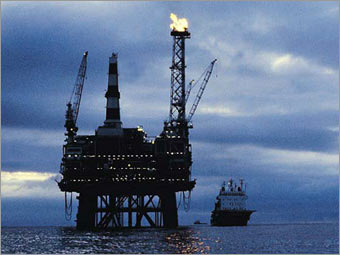The bulk of the world's production comes from organic-rich deposits laid down in two exceptional epochs of extreme global warming 90 and 150 million years ago.Indeed it would be strange if hydrogen and carbon only bonded twice in the Earth's history during periods of extreme global warming.
According to science there is a different reality than the myth perpetuated by British Petroleum. According to the modern theory, and more importantly empirical data, hydrocarbons are constantly being created.
Below the Gulf of Mexico, hydrocarbons flow upward through an intricate network of conduits and reservoirs. They start in thin layers of source rock and, from there, buoyantly rise to the surface. On their way up, the hydrocarbons collect in little rivulets, and create temporary pockets like rain filling a pond. Eventually most escape to the ocean. And, this is all happening now, not millions and millions of years ago, says Larry Cathles, a chemical geologist at Cornell University.Also see Colin Campbell: Wrong Again.
"We're dealing with this giant flow-through system where the hydrocarbons are generating now, moving through the overlying strata now, building the reservoirs now and spilling out into the ocean now," Cathles says.
He's bringing this new view of an active hydrocarbon cycle to industry, hoping it will lead to larger oil and gas discoveries. By matching the chemical signatures of the oil and gas with geologic models for the structures below the seafloor, petroleum geologists could tap into reserves larger than the North Sea, says Cathles, who presented his findings at the meeting of the American Chemical Society in New Orleans on March 27.

















